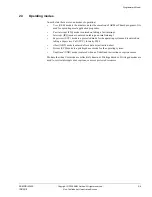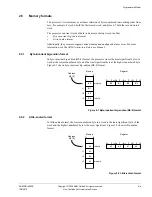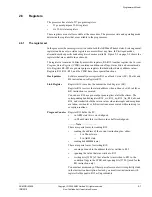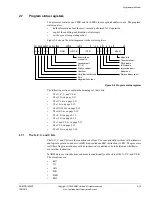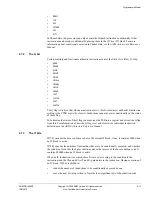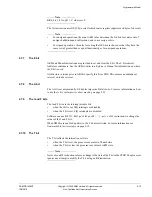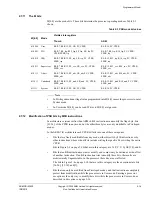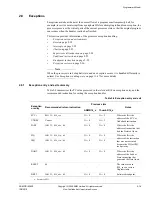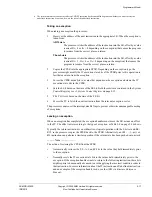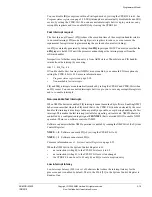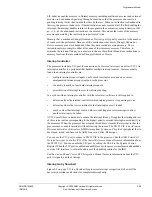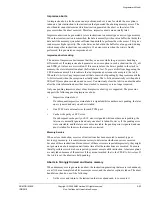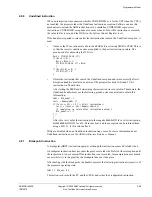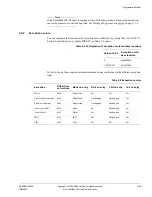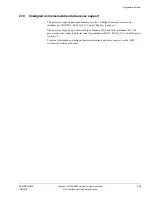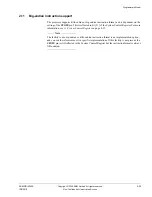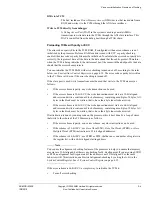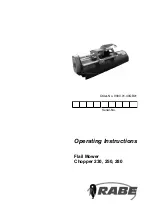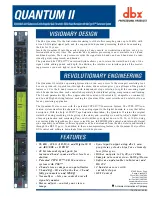
Programmer’s Model
ARM DDI 0363E
Copyright © 2009 ARM Limited. All rights reserved.
2-18
ID013010
Non-Confidential, Unrestricted Access
Because SVC handlers are always expected to return after the
SVC
instruction, the IT
execution state bits are automatically advanced when an exception is taken prior to
copying the CPSR into the SPSR.
2.8.2
Reset
When the
nRESET
signal is driven LOW a reset occurs, and the processor abandons the
executing instruction.
When
nRESET
is driven HIGH again the processor:
1.
Forces CPSR M[4:0] to b10011 (Supervisor mode) and sets the A, I, and F bits in the
CPSR. The E bit is set based on the state of the
CFGEE
pin. Other bits in the CPSR are
indeterminate.
2.
Forces the PC to fetch the next instruction from the reset vector address.
3.
Reverts to ARM state or Thumb state depending on the state of the
TEINIT
pin, and
resumes execution.
After reset, all register values except the PC and CPSR are indeterminate.
See Chapter 3
Processor Initialization, Resets, and Clocking
for more information on the reset
behavior for the processor.
2.8.3
Interrupts
The processor has two interrupt inputs, for normal interrupts (
nIRQ
) and fast interrupts (
nFIQ
).
Each interrupt pin, when asserted and not masked, causes the processor to take the appropriate
type of interrupt exception. See
Exceptions
on page 2-16 for more information. The CPSR.F and
CPSR.I bits control masking of fast and normal interrupts respectively.
A number of features exist to improve the interrupt latency, that is, the time taken between the
assertion of the interrupt input and the execution of the interrupt handler. By default, the
processor uses the
Low Interrupt Latency
(LIL) behaviors introduced in version 6 and later of
the ARM Architecture. The processor also has a port for connection of a
Vectored Interrupt
Controller
(VIC), and supports
Non-Maskable Fast Interrupts
(NMFI).
The following subsections describe interrupts:
•
Interrupt request
•
Fast interrupt request
on page 2-19
•
Non-maskable fast interrupts
on page 2-19
•
Low interrupt latency
on page 2-19
•
Interrupt controller
on page 2-20.
Interrupt request
The IRQ exception is a normal interrupt caused by a LOW level on the
nIRQ
input. An IRQ
has a lower priority than an FIQ, and is masked on entry to an FIQ sequence. You must ensure
that the
nIRQ
input is held LOW until the processor acknowledges the interrupt request, either
from the VIC interface or the software handler.
Irrespective of whether the exception is taken from ARM state or Thumb state, an IRQ handler
returns from the interrupt by executing:
SUBS PC, R14_irq, #4

